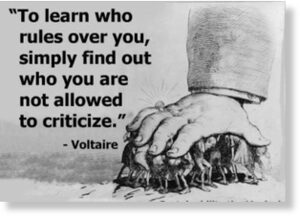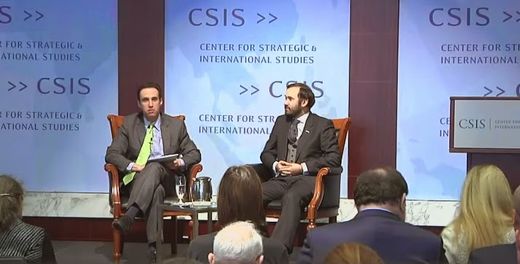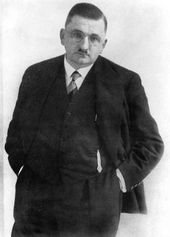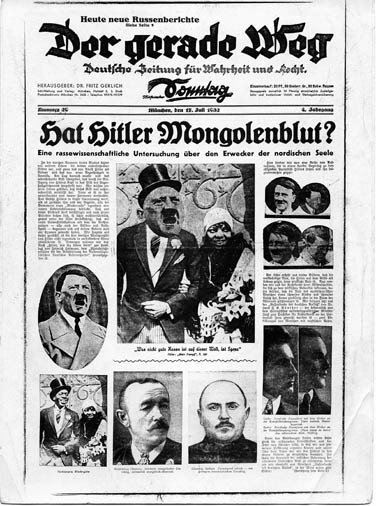
At our house, the most interesting conversations take place around the breakfast table before we begin our day’s work. The topics range from weird animal behavior to politics and everything in between. (Hmmm… in fact, “weird animal behavior” and “politics” may have more in common than one initially suspects!) Well, anyway, this morning the conversation led to an observation by one of the family members that everything is like I described in one of the chapters of
The Wave some 16 years ago, that we can look out the window and see cars passing, birds hopping around, people going about their business as though everything was still the same, but it isn’t; and knowing that it isn’t the same can have a profound, visceral effect on a person.
In The Wave, I was addressing the issue of becoming aware, via collecting evidence and connecting dots, that our reality may be/must be embedded in some bizarre ‘hyperdimensional reality’, and that we live our lives similar to the example given by Plato in his story of The Cave. Reading about such things as Platonic realms of ideas is an interesting intellectual exercise, but for me, and many others, it is a visceral experience. Anyway, the passage in question goes as follows:
“For many centuries, millennia even, simplistic religions and social dynamics were dominant over most of the world. This was possible because even when there was an intrusion by one of these hyperdimensional beings into our reality, when they did drop in for dinner, so to speak, it was easy to conceal because of the lack of communication between tribes and peoples.
When we sit in our comfortable homes and look at our reality, including that which is outside our windows, we see a stable front. Cars pass on the street, taking people to and from their homes in their varied daily activities; the sun shines; children pass by, talking and laughing. Everyone is involved in their life in an immediate and identified way, believing that this life they are involved in is what is.
But, once in a while, something bizarre happens to someone and they struggle to deal with this anomaly in the space-time continuum. Usually, it is sufficiently minor that they can dampen it and forget about it, which they must, because it is too aberrant in the normal accepted course of events. It must be shoved under the rug.
Once in awhile, bigger things happen in the reality – evidence of the hyperdimensional control system intrudes, or the screen breaks down in some way – and it becomes news and gets reported. Charles Fort spent many years collecting these types of things from the newspapers and magazines all over the world.
When this happens, the accepted belief system hurries to damp down the item so that everyone can go along in their respective and collective illusions. Since the events are localized, it is easy to cover it up. And, in the past, this was a lot easier than it is today.
When you read the collected information of Charles Fort, you see that the alien reality that is so widely reported today was just as active then as it is now. In fact, you see that it may even be somewhat cyclical. Just as we have cycles of food production, planting, growing and harvesting, so may hyperdimensional beings harvest us according to some “seasonal” rule.
In any event, before people began to become literate it was a lot easier to keep the lid on the matter. Then, books, papers and magazines were published and distributed. Travel became easier and information from around the world about these odd intrusions into our reality could be collected, giving an overall pattern that something was not right.
Before Charles Fort, there were a few people who already smelled a rat, but Mr. Fort kindly shoved it right under our noses and the reaction has been quite interesting. The cover-up machine went into full operation through the most effective vectors of mainstream science and religion.
But, the rat had been smelled and some people couldn’t just shove it back under the rug. The stench kept wafting in the open window. And so, certain people began to start searching for the source of this stinky rat. They began to gather knowledge and information.
We can even note how the cover-up machine began to do this damage control. When you study the history of social and religious movement and change, you can see the control system morphing with every discovery or realization made by human beings. As they outgrew the old religions, the simplistic explanations, new religions were put in place. At exactly the right time – the period of scientific expansion and growing knowledge of the nature of reality that brought the old religious views into serious question – the whole spiritualist movement began, leading to channeled information that was designed to patch up the holes in the control net. Newer and more elaborate explanations of the higher realms came into our reality. With each new question, the control system had a new answer to help everybody calm down, relax, and stop asking questions.
At the present time, this is even more amazingly evident. A few years ago, when we first began sharing the Cassiopaean information, many of the issues we dealt with were not even addressed by these other sources. But, with everything we release, the other side brings some new candidate forward with new explanations to patch the holes we are tearing in the fabric of their reality.”[Source]
Later on, after 9-11, as I was continuing the series of writings under the title “Adventures With Cassiopaea” (all has now been combined as volumes of The Wave in book format), I wrote in much the same context:
“As most of us realize, the status quo of the planet was ‘abridged’ in a big way on September 11, 2001. It was a watershed event and our lives will never be the same again. National Guard units patrol airport terminals and our nation’s Capitol, the Senate office building is closed because of the threat of anthrax. Barricades block streets leading to the White House. The FBI is detaining hundreds of suspects, the recently passed “Patriot Bill” (H.R. 3108) suspends important provisions of the Bill of Rights, the Office of Homeland Security has been established, and the The Model State Emergency Health Powers Act will soon become the law of the land. Most people accept what is happening because they’ve been told we must change our way of life and accept more government surveillance to preserve our liberty. Nothing could be further from the truth. The new measures are designed to restrict our freedom, undermine our Constitution, and usher in the New World Order.” [Source]
Obviously, I was still living in the USA at the time. As I’ve recounted elsewhere, for a variety of reasons, the main one being that we could see the handwriting on the wall about the USA, and France showing itself to be disinclined to bow to the demands of the Empire of Evil, refusing to participate in the illegal, pre-emptive war on Afghanistan and Iraq (I won’t even go into all of why that was dumb and dumber), we packed up and moved to France, lock, stock and barrel. I learned fairly quickly that “freedom of speech” has a very different definition than it did in the USA, but since I could still write about weird animal behavior and politics and everything in between, the small print wasn’t a problem.
Now, let me change tack here.
Bizarro World

I grew up with Superman comics. Burton L. Mack points out that our secular mythologies, such as comic book heroes, tend to “draw their power from their uncanny similarity to features of the biblical epic,” such as the model of Jesus in the Gospel of Mark, “coming into a world unable to solve its problems” and serving as a sort of itinerant wonder-worker.
1 Apparently, Superman, was created by two Jewish teenagers at a time when Jews desperately needed a heroic figure, and he displays all the characteristics of a messiah or redeemer. Kal-El, Superman’s true name, calls to mind Emmanu-El, “God with us,” and it translates in Hebrew to something like “All that is God.”
What is interesting to me here, however, is ‘Bizarro World’, which was introduced into the DC Comics Universe back in the 60s. Bizarro World was also known as ‘Htrae’, or ‘Earth’ spelled backward. It was a cube-shaped planet that was home to Bizarro and his merry men, all of whom were Bizarro versions of Superman and his entourage. In Bizarro world, society is ruled by the Bizarro Code that says: “Us do opposite of all Earthly things! Us hate beauty! Us love ugliness! Is big crime to make anything perfect on Bizarro World!” In one episode a salesman is doing a brisk trade selling Bizarro bonds: “Guaranteed to lose money for you”. Later, the mayor appoints Bizarro No. 1 to investigate a crime, “Because you are stupider than the entire Bizarro police force put together”. This is intended and taken as a great compliment. [see: Wikipedia] Thus, Bizarro world came to represent a place or events that were weirdly inverted or opposite of expectations.
Doublethink, Doublespeak, Doubletalk
Obviously, if people who are not ‘Bizarro’ wake up and find themselves in Bizarro World, or denizens of Bizarro World have landed on earth and taken over, it might require some adjustment for many people. Of course, we notice that a great number of people do not require adjustment to whatever the authorities proclaim or do. That is pretty well explained by psychologist, Bob Altemeyer’s work on the Authoritarian Personality. On his website, Altemeyer explains what his work is about:
“It’s about what’s happened to the American government lately. It’s about the disastrous decisions that government has made. It’s about the corruption that rotted the Congress. It’s about how traditional conservatism has nearly been destroyed by authoritarianism. It’s about how the “Religious Right” teamed up with amoral authoritarian leaders to push its un-democratic agenda onto the country. …
For example, take the following statement: “Once our government leaders and the authorities condemn the dangerous elements in our society, it will be the duty of every patriotic citizen to help stomp out the rot that is poisoning our country from within.” Sounds like something Hitler would say, right? Want to guess how many politicians, how many lawmakers in the United States agreed with it? Want to guess what they had in common?
Or how about a government program that persecutes political parties, or minorities, or journalists the authorities do not like, by putting them in jail, even torturing and killing them. Nobody would approve of that, right? Guess again.
Don’t think for a minute this doesn’t concern you personally. Let me ask you, as we’re passing the time here, how many ordinary people do you think an evil authority would have to order to kill you before he found someone who would, unjustly, out of sheer obedience, just because the authority said to? What sort of person is most likely to follow such an order? What kind of official is most likely to give that order, if it suited his purposes? Look at what experiments tell us, as I did. …
The studies explain so much about these people. Yes, the research shows they are very aggressive, but why are they so hostile? Yes, experiments show they are almost totally uninfluenced by reasoning and evidence, but why are they so dogmatic? Yes, studies show the Religious Right has more than its fair share of hypocrites, from top to bottom; but why are they two-faced, and how come one face never notices the other? Yes, their leaders can give the flimsiest of excuses and even outright lies about things they’ve done wrong, but why do the rank and file believe them? What happens when authoritarian followers find the authoritarian leaders they crave and start marching together?2
The problem of Authoritarian Followers who are often basically decent people, leads us to the issue of Doublethink. George Orwell coined the word doublethink in his novel Nineteen Eighty-Four.3 In the novel, the origin of doublethink within the typical citizen is unclear, though Altemeyer’s work goes a long way toward explaining it; Orwell explicitly shows people learning doublethink and newspeak due to peer pressure and a desire to “fit in”, or gain status within the Party – to be seen as a loyal Party Member.
“Doublethink is the act of ordinary people simultaneously accepting two mutually contradictory beliefs as correct, often in distinct social contexts. The paradox is expressed most succinctly in the novel in the three Party slogans: ‘War is Peace’, ‘Freedom is Slavery’, and ‘Ignorance is Strength’. The term is widely used to describe a capacity to engage in one line of thought in one situation (at work, in a certain group, in business, etc.) and another line in another situation (at home, in another group, in private life), without necessarily sensing any conflict between the two.” 4
Somewhat related but almost the opposite is cognitive dissonance, where contradictory beliefs cause conflict in one’s mind. Doublethink is notable due to a lack of cognitive dissonance – thus the person is completely unaware of any conflict or contradiction. It seems to me that those people (and there are a lot of them, possibly 45% of any given population) who do not suffer from Cognitive Dissonance when they wake up and find that they are living in Bizarro World, lack something though I won’t speculate on that here.
Doublethink leads us to ‘Doublespeak’ which does not actually appear in Orwell’s book though he did talk about it in his essays “Politics and the English Language“, where he says “unscrupulous politicians, advertisers, religionists, and other doublespeakers of whatever stripe continue to abuse language for manipulative purposes”. 5
“In our time, political speech and writing are largely the defence of the indefensible… Thus political language has to consist largely of euphemism, question-begging and sheer cloudy vagueness… the great enemy of clear language is insincerity. Where there is a gap between one’s real and one’s declared aims, one turns as it were instinctively to long words and exhausted idioms”. 6
“Doublespeak is language that deliberately disguises, distorts, or reverses the meaning of words. Doublespeak may take the form of euphemisms (e.g., “downsizing” for layoffs, “servicing the target” for bombing[Pentagon Is Given an Award, but It’s No Prize”. The New York Times. November 24, 1991.]), in which case it is primarily meant to make the truth sound more palatable. It may also refer to intentional ambiguity in language or to actual inversions of meaning (for example, naming a state of war “peace”). In such cases, doublespeak disguises the nature of the truth. Doublespeak is most closely associated with political language.” 7
Edward S. Herman, political economist and media analyst, describes in his book, Beyond Hypocrisy the principal characteristics of doublespeak:
“What is really important in the world of doublespeak is the ability to lie, whether knowingly or unconsciously, and to get away with it; and the ability to use lies and choose and shape facts selectively, blocking out those that don’t fit an agenda or program.” 8
According to William Lutz: “Only by teaching respect and love for the language can teachers of English instill in students the sense of outrage they should experience when they encounter doublespeak. …Students must first learn to use the language effectively, to understand its beauty and power…only by using language well will we come to appreciate the perversion inherent in doublespeak.” 9
“The National Council of Teachers of English (NCTE) Committee on Public Doublespeak was formed in 1971, in the midst of the Watergate scandal, at a point when there was widespread skepticism about the degree of truth which characterized relationships between the public and the worlds of politics, the military, and business. NCTE passed two resolutions. One called for the Council to find means to study dishonest and inhumane uses of language and literature by advertisers, to bring offenses to public attention, and to propose classroom techniques for preparing children to cope with commercial propaganda. The other called for the Council to find means to study the relations of language to public policy, to keep track of, publicize, and combat semantic distortion by public officials, candidates for office, political commentators, and all those who transmit through the mass media. Bringing the charges of the two resolutions to life was accomplished by forming NCTE’s Committee on Public Doublespeak, a body which has acquitted itself with notable achievements since its inception.” 10
Charles Weingartner, one of the founding members of the NCTE committee on Public Doublespeak wrote: “people do not know enough about the subject (the reality) to recognize that the language being used conceals, distorts, misleads”… Another expert writes: “Teachers of English should teach our students that words are not things, but verbal tokens or signs of things that should finally be carried back to the things that they stand for to be verified. Students should be taught a healthy skepticism about the potential abuse of language but duly warned about the dangers of an unhealthy cynicism.” 11
Lutz is one of the main contributors to the committee as well as promoting the term “doublespeak” to a mass audience so as to inform them of the deceptive qualities that doublespeak contains. He writes:
“There is more to being an effective consumer of language than just expressing dismay at dangling modifiers, faulty subject and verb agreement, or questionable usage. All who use language should be concerned whether statements and facts agree, whether language is, in Orwell’s words ‘largely the defense of the indefensible’ and whether language ‘is designed to make lies sound truthful and murder respectable, and to give an appearance of solidity to pure wind.'” 12
Lutz further states:
“language isn’t the invention of human beings to lie, deceive, mislead, and manipulate” and the “purpose of language is to communicate the truth and to facilitate social groups getting together”. Thus, according to Lutz, doublespeak is a form of language that defeats the purpose of inventing language because doublespeak does not communicate the truth but seeks to do the opposite and the doublespeak committee is tasked with correcting this problem that doublespeak has created in the world of language.”
Terrence P. Moran of the NCTE has compared the use of doublespeak in the mass media to laboratory experiments conducted on rats, where a batch of rats were deprived of food, before one half was fed sugar and water and the other half a saccharine solution. Both groups exhibited behavior indicating that their hunger was satisfied, but rats in the second group (which were fed saccharine solution) died from malnutrition. Moran highlights the structural nature of doublespeak, and notes that social institutions such as the mass media adopt an active, top-down approach in managing opinion. Therefore, Moran parallels doublespeak to producing an illusionary effect;
“This experiment suggests certain analogies between the environments created for rats by the scientists and the environments created for us humans by language and the various mass media of communication. Like the saccharine environment, an environment created or infiltrated by doublespeak provides the appearance of nourishment and the promise of survival, but the appearance is illusionary and the promise false.” 13
Doubletalk and Psychopathology

In his seminal work,
Political Ponerology,
14 psychologist Andrew Lobaczewski discusses the issue of what he terms “Doubletalk” at various points in his text. The first mention of the term comes in the section on Ideology where he notes that a group – any group and that includes national governments, international organizations, religions, etc – that has been infiltrated by pathological individuals, begins by gradually adapting the primary ideology and goals from the original formative ones, to what usually are completely opposite purposes. In other words, it can be a transformation of Earth to ‘Htrea’ – Bizarro World. This process leads to a sort of layering, or schizophrenia of ideology. The outer layer, or circle, still adheres to the original content that was advertised at the beginning as the group’s purposes; this layer is aimed at the lower-echelon members and the public. But within the inner circles, the core of the group, it is completely understood that the words have different meanings; that identical names signify different content. Lobaczewski notes that this very duality of language is a symptom of the transformation of the group into a Bizarro World. Lobaczewski notes:
“Doubletalk is only one of many symptoms. Others are the specific facility for producing new names which have suggestive effects and are accepted virtually uncritically…” [p. 191]
He then notes that there are certain characteristics that are additional symptoms of the pathological nature of such a group:
“We must thus point out the paramoralistic character and paranoidal qualities frequently contained within these names. The action of paralogisms and paramoralisms in this deformed ideology… Anything which threatens pathocratic rule becomes deeply immoral.” [p. 191]
At this point, Lobaczewski makes a very useful suggestion regarding how to cope with this need to become fluent in the language of Doublespeak/Doubletalk for our own protection:
“We thus have the right to invent appropriate names which would indicate the nature of the phenomena as accurately as possible, in keeping with our recognition and respect for the laws of the scientific methodology and semantics. Such accurate terms also serve to protect our minds from the suggestive effects of those other names and paralogisms, including the pathological material the latter contain.” [p.191]
And further on, he makes a slightly humorous analogy that perfectly describes Bizarro World and makes still another suggestion:
“As adduced above, the anomaly distinguished as essential psychopathy inspires the overall phenomenon in a well-developed pathocracy and betrays biological analogies to the well known phenomenon called Daltonism, color-blindness or near-blindness as regard to red and green. For the purpose of an intellectual exercise, let us thus imagine that Daltonists have managed to take over power in some country and have forbidden the citizens from distinguishing these colors, thus eliminating the distinction between green (unripe) and ripe tomatoes. Special vegetable patch inspectors armed with pistols and pickets would patrol the areas to make sure the citizens picked not only the ripe tomatoes. Such inspectors could not, of course, be totally color-blind themselves (otherwise they could not exercise this extremely important function), They could not suffer more than near-blindness as regards these colors. However, they would have to belong to the clan of people made nervous by any discussion about colors.
With such authorities around, the citizens might even be willing to eat a green tomato and affirm quite convincingly that it was ripe. But once the severe inspectors left for some other garden far away enough, there would be the shower of comments it does not behoove me to adduce in a scientific work. The citizens would then pick nicely vine-ripened tomatoes, make a salad with cream, and add a few drops of rum for flavor.
May I suggest that all normal people whom fate has forced to live under pathocratic rule make the serving of a salad according to the above recipe into a symbolic custom. Any guest recognizing the symbol by its color and aroma will refrain from making any comments. Such a custom might hasten the reinstallation of a normal man’s system.” [pp.217-218]
This article is just such a “salad.”
I leave you with that thought.
1 Burton L. Mack, Who Wrote the New Testament? The Making of the Christian Myth (New York: Harper San Francisco, 1995) p. 304.
2 http://home.cc.umanitoba.ca/~altemey
3 Martin Secker & Warburg Ltd, London]
4 McArthur, Tom, ed. (1992). The Oxford Companion to the English Language, Oxford University Press. p. 321
5 Kehl, D.G.; Livingston, Howard (July 1999). Doublespeak Detection for the English Classroom. The English Journal 88 (6): 78. JSTOR 822191
6 Orwell, George (1949). 1984. New York:Signet Books. p. 163
7 Wikipedia
8 Herman 1992. p. 3.
9 Lutz, William (March 1988). Fourteen Years of Doublespeak. The English Journal 77 (3). JSTOR 818411]
10 http://www.ncte.org/volunteer/groups/publiclangcom/doublespeakaward
11 ibid Kehl, D.G
12 A new look at ‘doublespeak. Advertising Age. November 6, 1989.
13 Moran, Terrence (Oct 1975). Public Doublespeak; 1984 and Beyond. College English 37 (2): 224
14 Andrew Lobaczewski, Political Ponerology, Red Pill Press (September 20, 2012)














